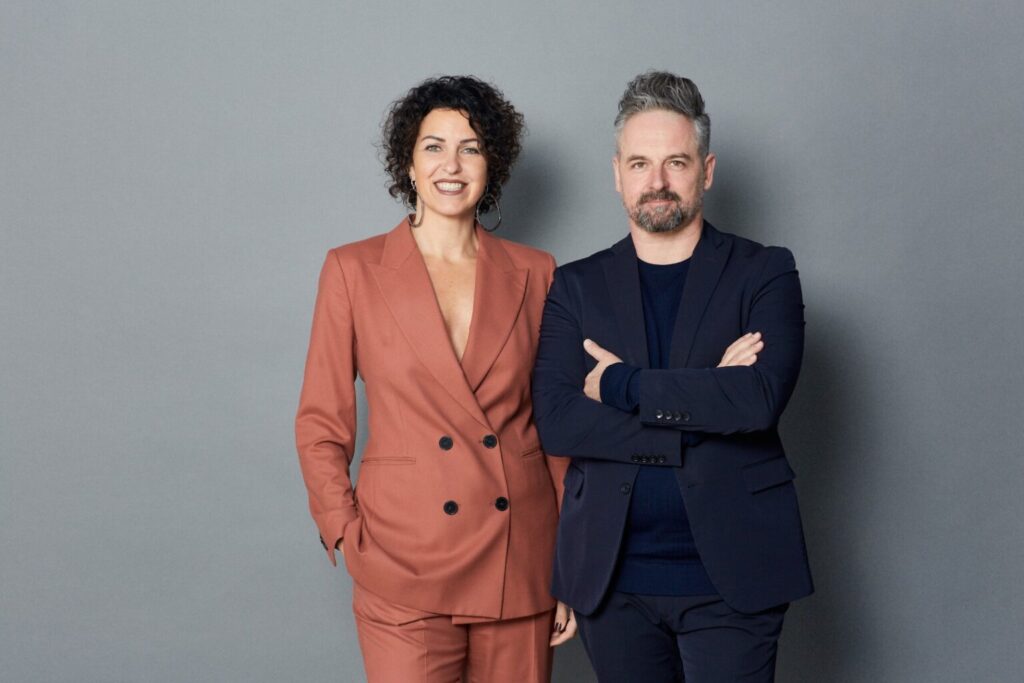The legal world is always evolving, with new approaches reshaping traditional practices. Nowadays, everyone focuses on individual success rather than the well-being of the community, Nupur Jain is a great example of someone who has brought together her passions and talents to make a positive impact in many areas.
As a lawyer, IIM Calcutta graduate, and Master’s student in Mediation and Conflict Resolution, Nupur’s journey shows the power of combining education with a strong desire to help others. But her story doesn’t stop there—Nupur is also an amateur weightlifter and powerlifter, inspired by her mother’s impressive athletic achievements.
Today, we are going to have an interview with Nupur Jain to learn about her experience and vision.
- What made you choose to specialize in Mediation and Conflict Resolution, and why do you think these skills are becoming more important in today’s legal world?
Ans. I come from a family of lawyers, my great maternal and paternal grandfathers, and my mother. My paternal grandfather, Mr. Mangalchand Baid was the Legal Head of erstwhile Esso Standard and now Hindustan Petroleum Corporation Limited. It was his legacy and my mother’s unconditional support which helped me to achieve all of this.
My grandmother dragged my mother and me into a 12-year court struggle when my father passed away without a will, which was ultimately resolved through mediation. Naturally, I began to investigate alternative dispute resolution, which protects the parties’ best interests, avoids conflicts, is less time-consuming, and isn’t as complicated as going to court.
Hence, I feel that we need to search for an alternate-to-alternate Dispute Resolution i.e. Mediation. I am a firm believer in “Justice delayed is Justice denied”.
Also, I believe that as a Mediator I am more psychologically and substantively satisfied as I help the disputants reach a future-centric solution and help retain and build relationships.
Accomplishments – According to Daksh, an NGO that analyzed the performance of the judiciary revealed that property disputes and family conflicts clog our judicial system, with 88% of cases being filed under these headings. If every individual made a will and/or partition agreement, the backlog of the judiciary would decrease tremendously, the estate would be distributed as per the wishes of the descendant, and it would keep the family together and prohibit family disputes. In one case, within a couple of months of drafting the will and making a partition agreement, the descendant died in an accident, and his estate was distributed as per his wishes and without any dispute.
In India, the average time for a suit of Contested Divorce is 3-4 years to be resolved. If couples opted for divorce by mutual consent or made prenuptial or postnuptial agreements, a messy divorce could be avoided and a better understanding between the couple could be created; divorce would be a speedy process, and important aspects like child custody, financial security, debts, alimony, and maintenance could be easily resolved. I successfully resolved divorce cases by mutual consent through dispute resolution. Since prenuptial and postnuptial agreements are not recognized by Indian law but are considered contracts, they have been recognized as valid by the Bombay High Court and the Allahabad High Court on many occasions.
- As both a lawyer and mediator, how do you find the right balance between showing empathy and making sure the outcome of conflicts is fair and just?
Ans. As an Advocate I am trained to fight for what is fair and just and as a Mediator I help resolve conflicts by showing empathy. On many days this is an extremely difficult thing to achieve. During mediation, I have to control the urge to decide for the parties that this solution is the best, and as an Advocate, I think that if the parties just communicate effectively then so many conflicts can be managed or resolved.
I rarely take up Litigation cases and even if I do I try my best to convince the parties to give Mediation a try before approaching the court. I also think looking at the broader picture helps solve this dilemma and helps me find the right balance. In the end, Mediation is a voluntary process and we can’t force anyone to resolve their conflicts.
- Can you share more about your experience with powerlifting? How has your fitness journey helped you grow both personally and professionally?
Ans. My mom, Neelam Jain is a National Level Powerlifter she’s the reason I play two games professionally, Powerlifting and Weightlifting.
I never liked picking up weights or heavy lifting. During my mom’s Personal Training sessions, she always told Jitendra Aher Sir (Jitu Sir) – “Nupur will not pick up more than 60kgs, please don’t force her” and sir never did. I started going to competitions with my mom and sir for morale support and also Weightlifting and Powerlifting are team games. I used to spend days with them and then one day I thought since I was there the entire day I might as well play too. And then there was no turning back. I am not as good as my mom but I am getting there. Mom and Jitu Sir inspired me to play and lift weights.
Today I have set new records for myself – Deadlift 115kgs, Squat – 100kgs, Benchpress – 50kgs, Snatch 35kgs, and Clean & Jerk – 40kgs.
The only reason I lift weights is because I know that Jitu Sir is there behind me. I know that he will make sure I am not injured or hurt.
Lifting weights has brought more focus and discipline in my life and this can get very addictive after a point of time. It has also given me more stability and security in my mind and body. I have new pains daily, body is perpetually sore but for some reason it’s good. I look forward to my training sessions, I set goals and work to achieve them. Everyone says that they don’t have time to work out and can’t manage work – for all those people I work, study, and work out daily.
When you lift you’re not just building muscle….you’re building
- A strong work ethic
- A resilient mind
- A will to never give up
10 side effects of lifting weights:
- More energy
- Fixed posture
- Uplifted mood
- Mental strength
- Stress reduction
- Improved Health
- High confidence
- Increased strength
- Better quality sleep
- Good looking body
This is a long game….stay fit for life.

- With a strong family history in Powerlifting, how does physical strength help you build mental toughness, especially in a challenging field like law?
When you lift you’re not just building muscle….you’re building
a)A strong work ethic
b)A resilient mind
c) A will to never give up
10 side effects of lifting weights:
- More energy
- Fixed posture
- Uplifted mood
- Mental strength
- Stress reduction
- Improved Health
- High confidence
- Increased strength
- Better quality sleep
- Good looking body
This is a long game….stay fit for life.
Get to a point where your body craves exercise. No daily reminders or alarms are needed. Just an internal alarm that screams “I NEED TO MOVE”. When rest day becomes the hardest day……you’ve made it.
- What motivated you to pursue a PhD in Criminal Mediation, and what do you hope your research will achieve?
Mediation in criminal cases in India is extremely rare, however, in some criminal cases of minimal degree (especially compoundable crimes) such as Hurt, Wrongful Confinement, Assault, Molestation, Cheating, Adultery, etc., there is the possibility of mediation. But still, we cannot say that the practice of mediation in case of criminal cases is uninterruptedly possible.
Mediation in criminal cases can cover a range of offenses, from minor to more serious crimes, depending on the legal framework and the consent of the parties involved. It is often used as an alternative or complementary approach to traditional court proceedings, aiming to reduce the adversarial nature of the criminal justice system and promote healing, understanding, and community involvement.
Furthermore, During the mediation process, participants have the opportunity to express their feelings, share their perspectives, ask questions, and engage in direct communication. This can help victims find closure, voice their concerns, and seek restitution or apologies from the offender. For offenders, mediation offers a chance to take responsibility for their actions, understand the impact of their behavior, and actively participate in making amends.
The primary objective of mediation in criminal cases is to promote restorative justice principles, which focus on repairing the harm caused by the crime, addressing the needs of the victim, and promoting the rehabilitation and accountability of the offender. Mediation provides a platform for open dialogue, empathy, and understanding between the victim and the offender to reach a mutually acceptable agreement or resolution.
Benefits would include – Victim empowerment and voice, Offender Accountability and Responsibility, Restorative Justice and Healing, Speed and Efficiency, Customised Resolutions, Preservation of Relationships and Community Harmony, and Reduced Recidivism.
It’s important to note that not all criminal cases are suitable for mediation, better to say not allowed to resolve through mediation. Serious offenses like violent crimes, murder, sexual offenses, or cases involving vulnerable victims, may be deemed inappropriate for mediation due to the power dynamics, safety concerns, or the need for specialized support and intervention.
On the other hand, in cases, where there is scope for mediation, the decision to pursue mediation rests on the consent of the victim, the offender, and the discretion of legal authorities. The specific eligibility and suitability criteria may vary based on local laws, guidelines, and the availability of trained mediators.
6. From your experience, what changes do you think are needed in the legal system to make justice more accessible and efficient for everyone?
1) Leveraging Information and Communication Technology (ICT)
- Virtual court system: In the virtual court system, regular court proceedings are conducted virtually through videoconferencing.
- E-Sewa Kendras: To provide e-filing services to lawyers and litigants to bridge the digital divide.
- National Judicial Data Grid (NJDG): Under NJDG, lawyers and litigants can access status information of cases and orders/judgments.
- National Service and Tracking of Electronic Processes (NSTEP): It provides technology-enabled processes for serving and issuing summons.
- Secure, Scalable & Sugamya Website as a Service (S3WAAS) Website: A new divyang-friendly website for e-committee, based on the S3WaaS platform, is available in 13 regional languages including English & Hindi.
- Virtual Justice Clock: It is an initiative to exhibit vital statistics like case details, pendency, case disposed, etc., of the justice delivery system at the Court level
- Transparency in Appointment: The Law Commission of India (LCI) 2009 recommended that the executive and judiciary should function together to find the most suitable (candidates) available for appointment. This can be achieved by combining the legal acumen of the judiciary, and in the area of antecedents, the executive’s opinion should be dominant.
- Reducing pendency: LCI (2009) recommended that:
- Maximum Strength of the Judges in the Supreme Court should be increased.
- The need to divide the Supreme Court into a Constitution Bench at Delhi and Cassation Benches in four regions at Delhi, Chennai/Hyderabad, Kolkata, and Mumbai to ensure timely Justice delivery.
- Constitutional provisions need a change to enhance the retirement age of High Court and Supreme Court Judges by at least three years.
- Increasing the number of Judges to maintain a healthy Judge-population ratio – 50 per million
- Optimum time utilization: LCI (2009) recommended:
- Considering the staggering arrears, vacations in the higher judiciary must be curtailed by at least 10 to 15 days and the court working hours should be extended by at least half-an-hour.
- Judicial Impact Assessment: Make judicial impact assessment compulsory whenever new laws are made.
- Increase the use of the ADR mechanism and Plea Bargaining: Building awareness among litigants and prospective litigants about ADR processes and encouraging out-of-court settlements.
- All India Judicial Services (AIJS): It is a proposed national-level judicial service in India. It aims to create a unified and centralized system for the recruitment and career progression of judicial officers in the country.
- Judicial Management cadre: A Judicial Management Cadre to manage judiciary administration at all levels can be established.
- National Judicial Infrastructure Authority: Former Chief Justice of India N V Ramanna, in his remarks, said a National Judicial Infrastructure Authority should be created for the standardization and improvement of judicial infrastructure.
- Simplifying procedural laws: Simplifying procedural laws to expedite the hearing and disposal of cases and to improve and bring clarity to substantive laws by repealing/amending outdated/unworkable laws.
- Improve the functioning of Fast Track Courts: A two-pronged approach that improves the human capacity of these courts with dedicated judges and competent staff while restructuring processes is needed.
- Setting up an independent mechanism for legal services: Legal services can be entrusted to the Executive Wing of the Government for implementation, in consultation with the High Court/other stakeholders, by an appropriate amendment to the Legal Services Authorities Act, 1976.
- Timely Justice to Undertrials: Undertrials can be provided speedy justice by providing adequate opportunities for bail. The Supreme Court held that “bail is the norm, whereas jail is an exception”.
- Increase representation of women in the Judicial System: Former CJI N V Ramana has voiced support for 50% representation for women in the judiciary. He remarked that “the presence of women as judges and lawyers, will substantially improve the justice delivery system.
- Legal Education: Improving Legal Education and providing for compulsory apprenticeship to members of the Bar.
- Research and Training Centre: A Research and Training Centre for improving legislative drafting, conducting Judicial Impact Assessments, and training Law Officers of the Government can be established.
- Prompt Investigation and Prosecution: The functioning of investigating agencies (Police) and prosecuting agencies (Directorate of Prosecution) should be improved to ensure proper and timely investigation and prosecution.









